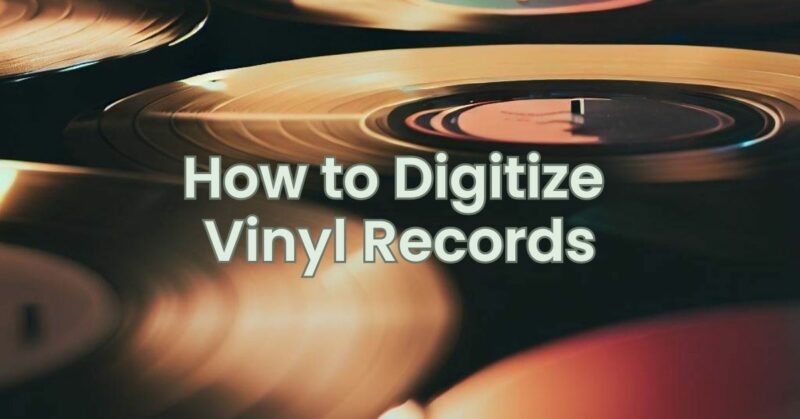Vinyl records offer a unique and nostalgic listening experience, but they require special equipment and care to enjoy. If you want to enjoy your vinyl collection in a digital format or simply preserve your favorite records for posterity, digitizing vinyl records is an excellent solution. In this article, we will guide you through the process of digitizing vinyl records, ensuring that you can enjoy your cherished analog sound in the digital age.
- Equipment and Software: To digitize vinyl records, you will need the following equipment and software
a. Turntable: A quality turntable is essential for accurate playback. Choose a turntable with a good tonearm and cartridge to ensure high-quality sound reproduction.
b. Preamp: If your turntable doesn’t have a built-in preamp, you will need an external phono preamp to amplify the signal from the turntable to line level.
c. Audio Interface: An audio interface allows you to connect your turntable to your computer. Choose an interface with appropriate inputs for connecting your turntable, such as a phono input or RCA inputs.
d. Computer: A computer is necessary to capture and edit the audio from your vinyl records. Ensure that it has sufficient processing power and storage space.
e. Recording Software: There are various recording software options available, both free and paid. Audacity and Adobe Audition are popular choices that offer comprehensive recording and editing capabilities.
- Set Up Your Equipment: Proper setup of your equipment is crucial for capturing high-quality audio. Follow these steps
a. Connect your turntable to the preamp, and the preamp to the audio interface using appropriate cables.
b. Connect the audio interface to your computer via USB or Thunderbolt.
c. Install and configure the recording software on your computer.
d. Calibrate the recording levels to ensure optimal audio capture without clipping or distortion.
- Record and Edit: Once your equipment is set up, it’s time to start recording and digitizing your vinyl records. Follow these steps
a. Clean your vinyl record thoroughly using a record cleaning brush or a carbon fiber brush to remove dust and debris that can affect audio quality.
b. Start the recording software on your computer and create a new recording session.
c. Place the vinyl record on the turntable and cue it up to the desired starting point.
d. Click the record button in the recording software and start playing the record on the turntable.
e. Monitor the recording levels to ensure a clean and undistorted signal. Adjust the levels if necessary.
f. Let the record play in its entirety, capturing the audio in real-time.
g. Once the recording is complete, stop the recording in the software.
h. Edit the recorded audio if desired. You can remove any unwanted noise or imperfections, adjust volume levels, or apply equalization if necessary.
- Export and Save: After editing the recorded audio, it’s time to export and save the digitized files. Follow these steps
a. Choose the desired file format for your digital audio files, such as WAV or FLAC, for high-quality preservation.
b. Select the appropriate bit depth and sample rate for your files. Higher bit depth and sample rates yield better audio quality but result in larger file sizes.
c. Export the edited audio files to your desired location on your computer or external storage.
- Organize and Enjoy: With your vinyl records successfully digitized, it’s time to organize and enjoy your digital music collection. Create folders or playlists on your computer to keep your digitized records organized. You can also transfer the files to portable music players or stream them to other devices for convenient access.
Digitizing vinyl records allows you to preserve and enjoy your analog music collection in a digital format. With the right equipment, software, and proper setup, you can capture the warmth and character of vinyl records while enjoying the convenience of digital playback. Follow the steps outlined in this article, and soon you’ll have a digital music library that can be easily enjoyed and shared for years to come.

